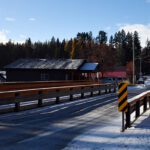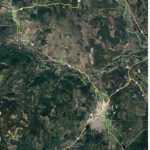Home »

Passionate mentor’s guidance lowers risk for skiers
 College of the Rockies People: Their Courage, Curiosity, and Contributions
College of the Rockies People: Their Courage, Curiosity, and Contributions
College of the Rockies Mountain Adventure Skills Training (MAST) coordinator Brian Bell has found solace in wild places for most of his life.
In 1990, he moved to B.C., began exploring the mountains, and took part in his first backcountry skiing experience. He was hooked.
“The backcountry is quiet and rejuvenates me,” he said. “That’s not something I get from skiing at a resort.

“To enjoy backcountry skiing you have to love the effort it takes to get you there. You truly ‘earn your turns’ trekking through the snow and trees, creating an efficient clean line up the mountain. Doing this well is an art that I love to pursue.”
As coordinator and instructor for the MAST program, Bell’s favourite part of his job is to develop the skills, strengthen the focus, and stoke the passion that lies within his students. He recently got the opportunity to do so in a unique way.
“Rob Whelan, a senior ski guide with Canadian Mountain Holidays (CMH), approached the college about a research project,” Bell said. “Each year new groups of skiers at CMH receives training in basic avalanche safety as well as tree-well safety. Rob wanted to further explore tree well rescue with the objective of determining best practice protocols.”
Though he hasn’t had any dangerous experiences with tree wells himself, Bell knows they are a significant issue for skiers and snowboarders. Tree wells are areas of loose snow around the trunk of a tree that create risks for serious injury or even death when a skier or snowboarder falls into one. Trapped by the snow, the immobilized skier or boarder runs the risk of suffocating. According to the Canadian Ski Patrol, 90% of people trapped in tree well hazards are unable to rescue themselves.
“In the past few years there have been fatalities both to backcountry commercial and recreational skiers and snowboarders, as well as inbounds, or just out-of-bounds, of controlled ski resorts,” Bell said.
 When approached to have his students participate in the research, Bell jumped on the opportunity.
When approached to have his students participate in the research, Bell jumped on the opportunity.
“This project required a perfect mix of skills that MAST students could fulfill, and it was a unique real-world challenge for them to solve,” he said. “The students rose to that challenge and did a great job exploring a mountain hazard that is under-appreciated by most recreational, and even professional, skiers, snowboarders, and snowmobilers.
“With the results of this research, we will be able to publish best-practices guidelines for tree well rescue and, most importantly, help to make the backcountry a safer place for all to enjoy.”
 The results of the MAST program’s research have been shared at the Canadian Avalanche Association tradeshow, presented at the Elk Valley Snow Avalanche workshop in October, were published in a recent issue of The Avalanche Journal and are available on the College website.
The results of the MAST program’s research have been shared at the Canadian Avalanche Association tradeshow, presented at the Elk Valley Snow Avalanche workshop in October, were published in a recent issue of The Avalanche Journal and are available on the College website.
“The best part of my job is teaching such enthusiastic, keen, young — and sometimes not so young — adventurers,” Bell said. “We all share a passion for the outdoors.”
Bell’s commitment to his students is unmistakable; as is his love of the backcountry. Being able to combine the two in a way that makes the wild places he finds solace in safer for everyone, is a contribution he can be proud of.
 Photos courtesy College of the Rockies
Photos courtesy College of the Rockies
College of the Rockies







